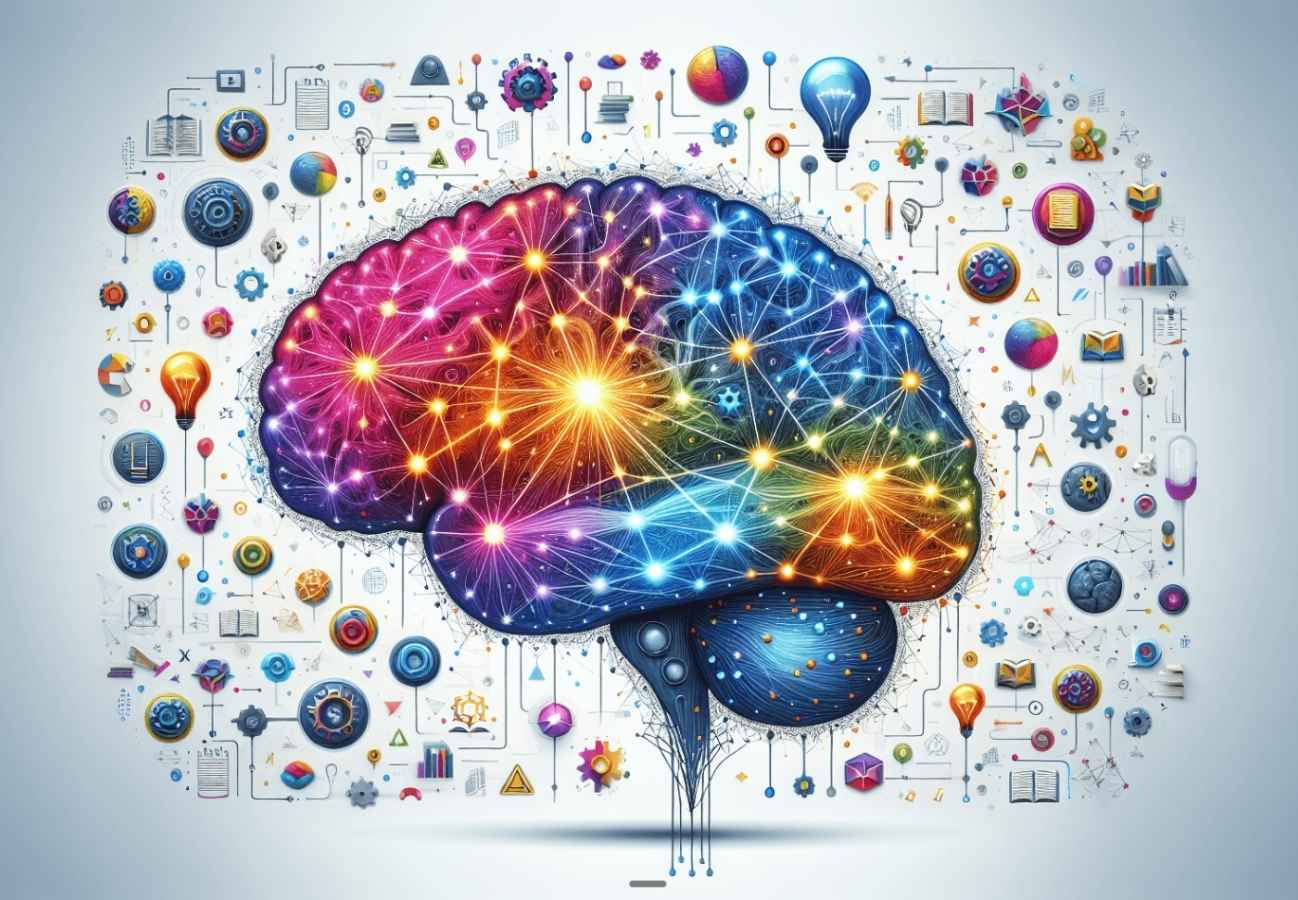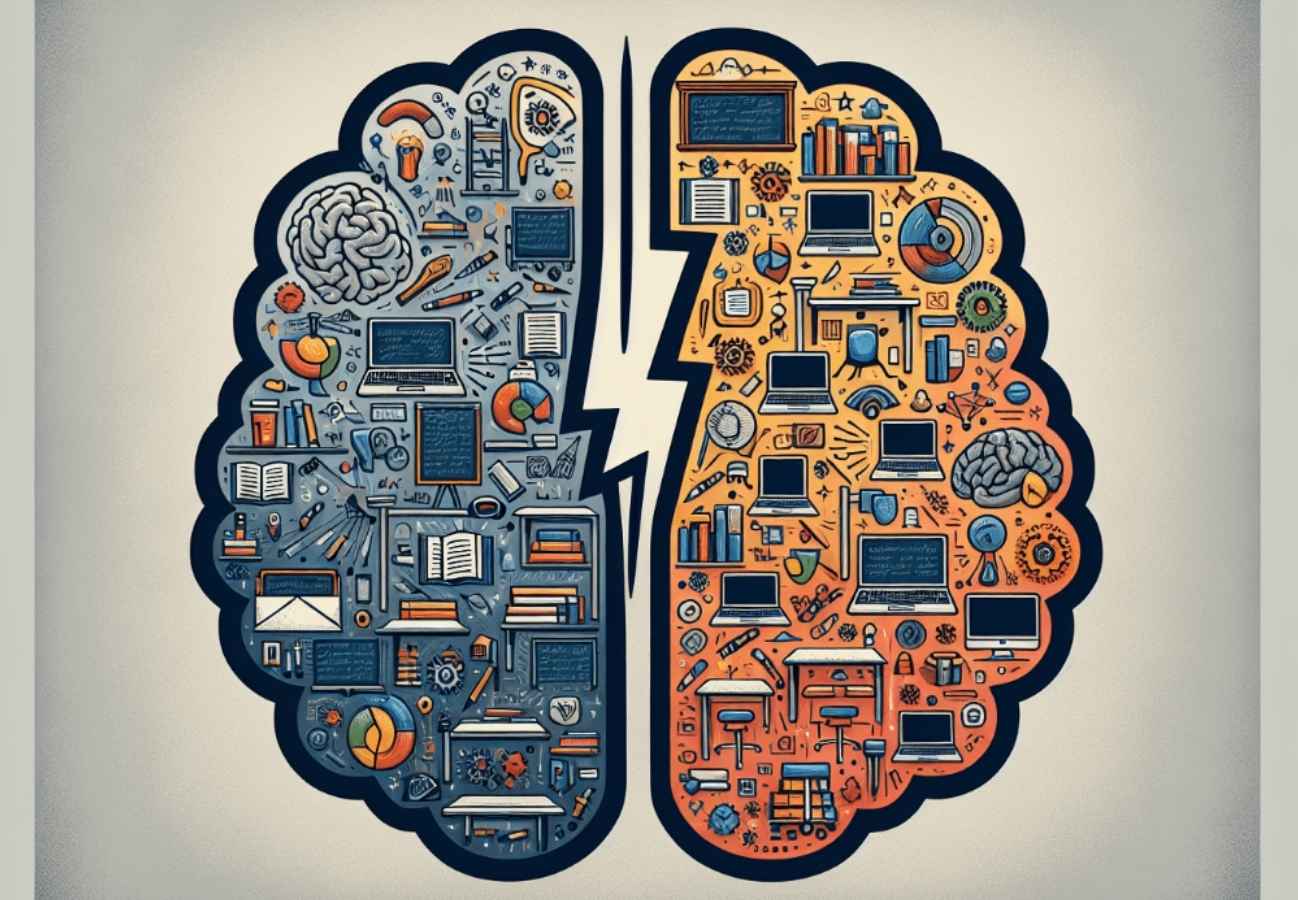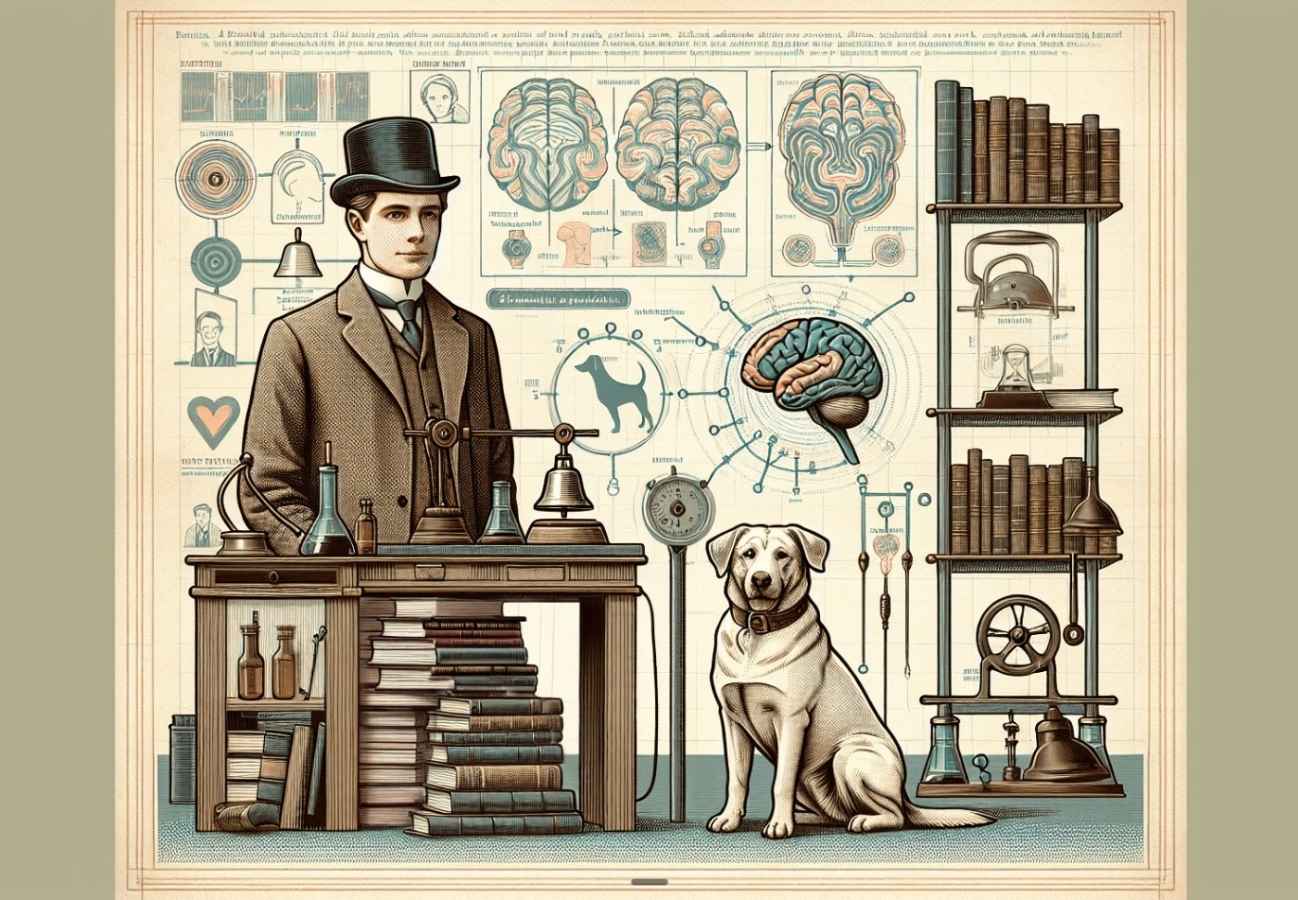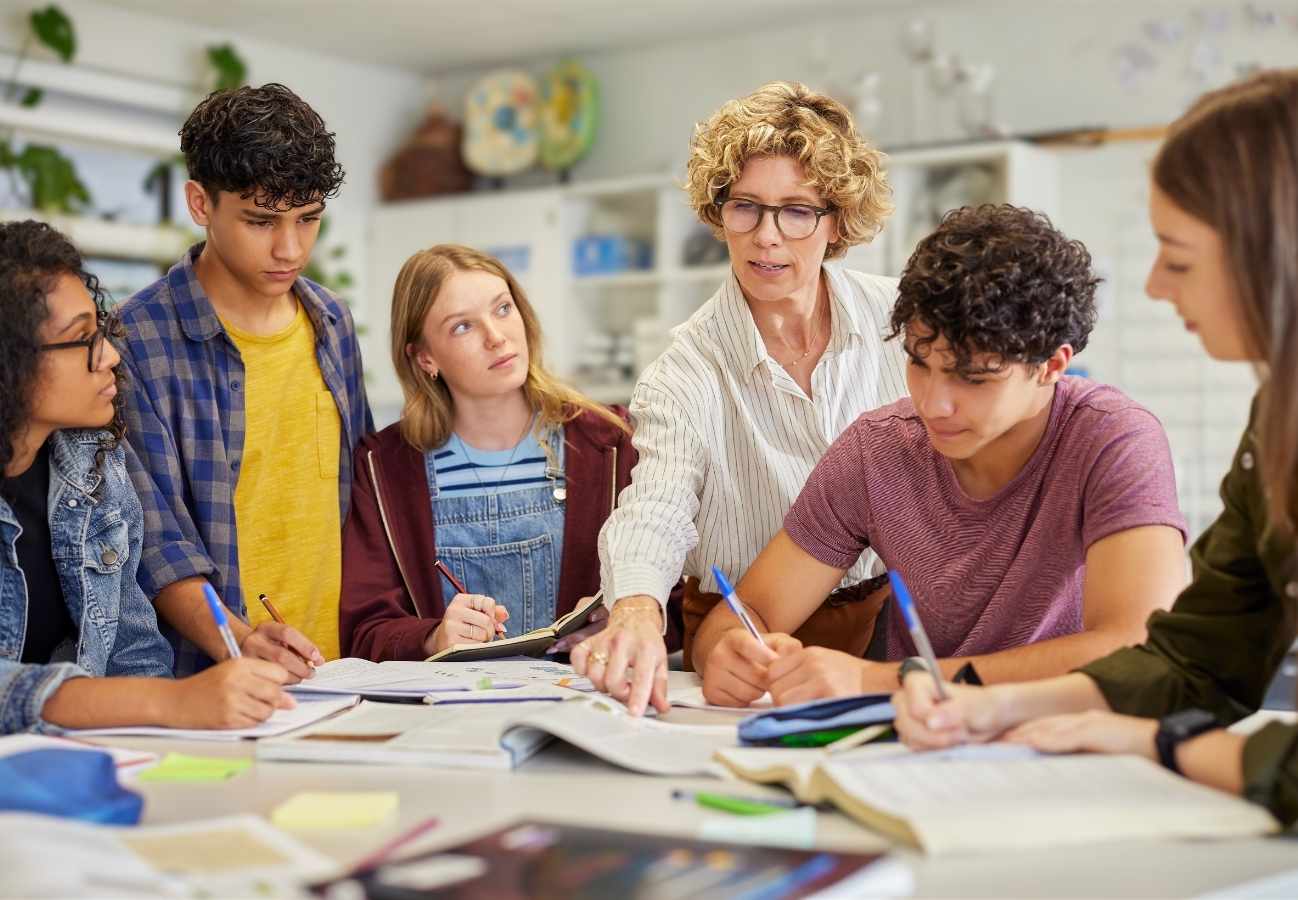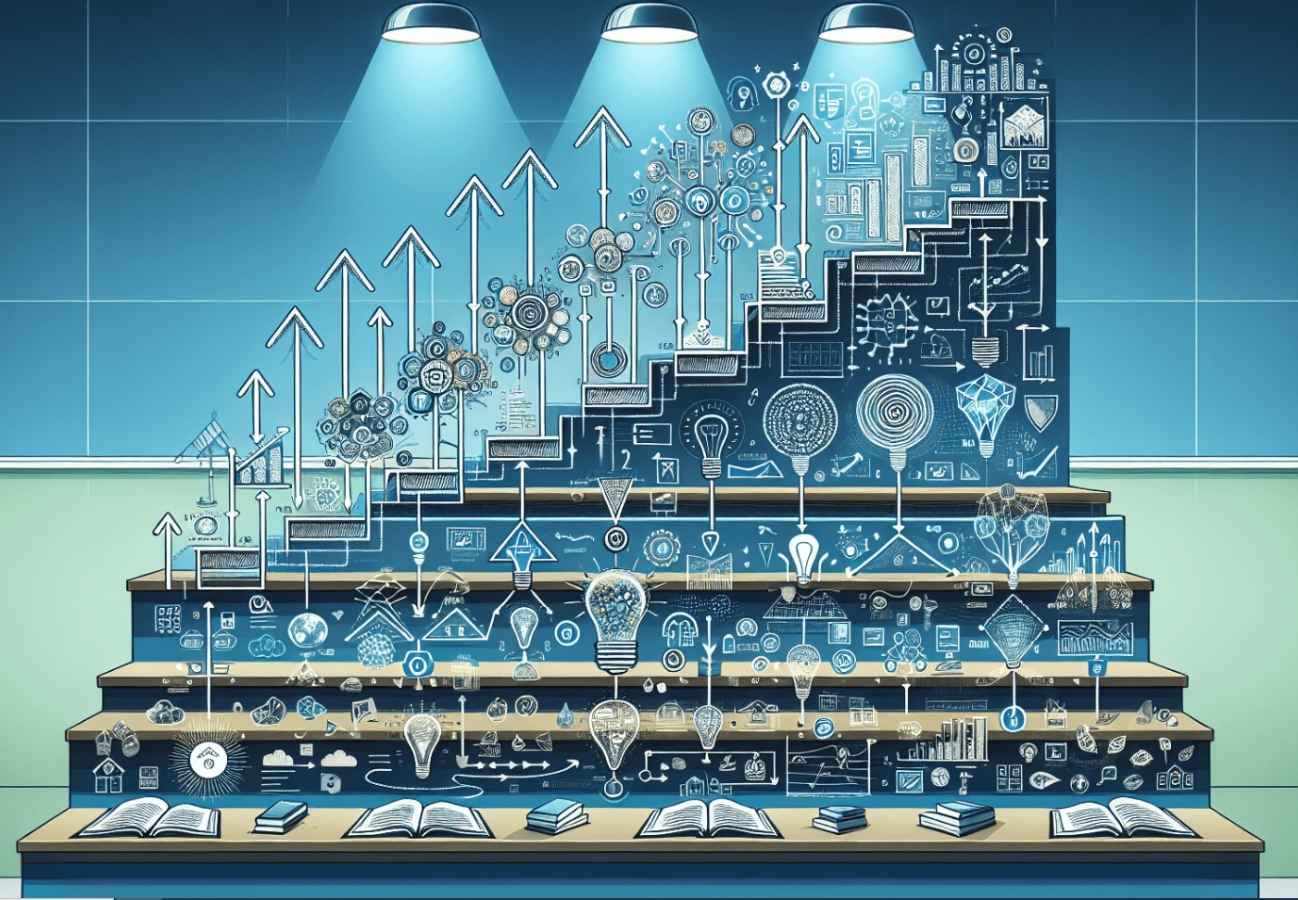Before the 1960s, education treated students like machines. Stimulus in, response out. Teachers delivered information, students memorized it, tests measured recall. Simple, mechanical, and wrong.
Cognitive learning theory revealed something more human: learning happens through active thinking, connecting, and meaning-making. Students aren't passive receivers. They're processors who bring their entire history to every new learning moment.
This changes everything. Instead of delivering content and expecting uniform results, teachers must understand how students think, what they already know, and how new concepts connect to existing understanding.
What Is Cognitive Learning Theory?
Cognitive learning theory explains learning as an active mental process where students construct knowledge through thinking, remembering, problem-solving, and connecting new information to what they already know.
Unlike behaviorist theories that focus only on observable responses to external stimuli, cognitive approaches examine the internal mental processes that drive understanding. Students aren't blank slates or programmable machines. They're meaning-makers who actively organize and store information based on their unique cognitive structures.
The theory emerged when psychologists and educators recognized that identical teaching produces wildly different results. Why? Because each learner processes information uniquely based on their existing knowledge, experiences, and developmental stage.
From Behaviorism to Cognitivism: A Paradigm Shift That Still Matters
For decades, behaviorism dominated educational psychology. B.F. Skinner and his followers saw learners as passive recipients who responded predictably to rewards and punishments. Teachers broke skills into tiny steps, drilled correct responses, and reinforced desired behaviors.
This mechanistic view worked for training simple skills - memorizing multiplication tables, following procedures. But it failed to explain how humans develop deep understanding, solve novel problems, or think creatively.
Cognitive theorists challenged this view in the 1960s. They demonstrated that learning requires more than stimulus-response conditioning. Students bring prior knowledge, cognitive structures, and active thinking to every learning situation. Identical teaching methods produce different results because minds aren't machines.
Why this shift still matters in today's classrooms:
The industrial model of education - based on behaviorist principles - persists in most schools. Standardized curricula. Pacing guides. Test-driven instruction. All assume students are interchangeable units who should respond uniformly to the same inputs.
Cognitive learning theory offers an alternative. It acknowledges the complexity of human thinking and the reality that deep learning requires understanding how students process, organize, and connect information.
In an AI-driven world where information is everywhere, the cognitive processes that help students think, not just recall, become essential.
The Information Processing Model: How Learning Moves Through the Mind
Cognitive psychologists developed the information processing model to understand how learning occurs. The model compares human thinking to computer processing - though the analogy has limits we'll address.
Sensory Memory: The First Filter
Learning begins when information enters through your senses. Sensory memory holds this input for 1-2 seconds while your brain decides what deserves attention.
Most sensory input disappears immediately. You don't remember every sound, sight, or sensation from the last hour. Your brain filters ruthlessly, attending only to what seems important, novel, or emotionally charged.
For teachers, this means competing for attention in an environment full of distractions. Visual displays, vocal emphasis, movement, and emotional hooks help important content stand out from the noise.
Working Memory: Where Thinking Happens
Working memory is your mind's workspace. This is where active learning occurs - where you manipulate information, solve problems, and connect new concepts to prior knowledge.
But working memory has severe constraints. Research shows it can hold only 5-9 pieces of information at once. Try to process more, and the system overloads.
This explains why students zone out during long lectures. When teachers present too much too fast, working memory fills up. New information has nowhere to go. Students stop processing.
Effective instruction respects these limits. Introduce concepts gradually. Provide processing time. Break complex ideas into manageable chunks. Let working memory breathe.
Long-Term Memory: The Knowledge Network
Long-term memory stores knowledge permanently in vast, interconnected networks. Unlike working memory's severe limits, long-term memory appears to have unlimited capacity.
But there's a catch: information only transfers to long-term storage when it's meaningful. Random facts, disconnected procedures, and abstract concepts without context don't stick. They're forgotten within days.
Information becomes meaningful when:
- It connects to existing knowledge
- It matters to the learner's goals or identity
- It's used in varied contexts
- It's processed deeply, not just memorized
The industrial model of education often ignores this reality, treating memory like a hard drive where you can dump content and expect it to stay. Cognitive theory reveals why this fails - and what actually works.
Core Cognitive Processes That Drive Learning
Several fundamental processes determine how effectively students learn. Understanding these processes changes how teachers design instruction.
Schema Theory: Mental Filing Systems
Schemas are organized knowledge structures that help you understand and interpret new information. Think of them as mental filing cabinets where related concepts, experiences, and procedures cluster together.
When you encounter new information, your brain does one of two things:
Assimilation: You fit new information into existing schemas. A child who knows "dogs have four legs and bark" easily assimilates "poodles are dogs."
Accommodation: You modify existing schemas when new information doesn't fit. That same child learning about dolphins must accommodate their "animal" schema to include intelligent, aquatic mammals that aren't fish.
Jean Piaget, the Swiss psychologist who pioneered schema theory, showed that learning often requires accommodation - restructuring what you think you know. This process can be uncomfortable, which partly explains why changing minds is hard.
Learn more about Jean Piaget and his theories
For teachers, schema theory suggests:
- Always activate prior knowledge before introducing new concepts
- Make connections explicit with graphic organizers and analogies
- Provide multiple examples that show concept variations
- Expect and support the discomfort of accommodation
Learn more about Schema in psychology
Metacognition: The Most Powerful Learning Skill
Metacognition means thinking about thinking. It's your awareness of your own mental processes and your ability to regulate your learning strategies.
Students with strong metacognitive skills know when they understand material and when they don't. They monitor comprehension, select effective strategies, and evaluate progress. When stuck, they don't just give up - they try different approaches.
Research consistently shows that metacognitive instruction improves achievement across subjects and grade levels. Yet most classrooms don't explicitly teach these skills.
Practical metacognitive strategies include teaching students to ask themselves:
- Do I understand this concept?
- What strategy should I use here?
- Is this approach working?
- How does this connect to what I already know?
- What should I do if I'm stuck?
With practice, these internal conversations become automatic. Students develop what psychologists call "self-regulated learning" - the ability to manage their own learning process.
In a world where learning must continue long after formal schooling ends, metacognition may be the most valuable skill education can develop.
Chunking: Working With Working Memory's Limits
Chunking groups related information into meaningful units that are easier to process and remember. Instead of treating each piece of information separately, you bundle them into single "chunks."
Expert learners chunk automatically in their domains of expertise. A skilled reader sees whole words, not individual letters. An experienced mathematician recognizes problem patterns, not isolated numbers. A master chef groups ingredients by technique and flavor profile.
Chunking helps overcome working memory's limitations by treating multiple pieces of information as one unit. A phone number isn't ten separate digits - it's three chunks: area code, prefix, line number.
Teachers can support chunking by:
- Organizing content into logical groups
- Using consistent formatting and structure
- Helping students identify patterns and relationships
- Teaching domain-specific organizational schemes
Encoding: The Difference Between Shallow and Deep Learning
Encoding determines how information moves from working memory to long-term storage. Not all encoding is equal.
Shallow encoding focuses on surface features - memorizing definitions, repeating facts, cramming for tests. This produces fragile learning that fades quickly.
Deep encoding involves understanding meaning, making connections, and using knowledge in new contexts. This produces durable learning that transfers to novel situations.
Effective encoding strategies:
- Elaboration: Add details, explanations, and personal connections to basic information
- Organization: Arrange information in logical structures using outlines, diagrams, or hierarchies
- Visualization: Create mental images of abstract concepts
- Generation: Produce answers from memory rather than just reviewing material
- Application: Use knowledge in varied contexts and novel problems
The industrial model of education often emphasizes shallow encoding - memorize, test, forget. Cognitive theory reveals why this fails and what actually produces lasting learning.
Three Cognitive Theorists Who Changed Education
Jean Piaget: Children Think Differently
Jean Piaget (1896-1980) was a Swiss psychologist who revolutionized education by demonstrating that children don't just know less than adults - they think differently.
Piaget identified four stages of cognitive development, each characterized by distinct ways of understanding the world:
Sensorimotor Stage (birth to 2 years): Infants learn through direct sensory experience and motor action. They develop object permanence - the understanding that things exist even when you can't see them.
Preoperational Stage (2 to 7 years): Children develop language and symbolic thinking but struggle with logic and conservation (understanding that quantity doesn't change when appearance changes).
Concrete Operational Stage (7 to 11 years): Children master logical thinking about concrete objects and events but struggle with abstract concepts.
Formal Operational Stage (11+ years): Adolescents develop abstract reasoning, hypothetical thinking, and systematic problem-solving.
His work reminded educators that instruction must match developmental readiness. Abstract concepts that seem simple to adults may be incomprehensible to students who haven't developed formal operational thinking.
Piaget also emphasized active learning through exploration and discovery. Children construct knowledge by interacting with their environment, not by passively receiving information. This insight continues to influence progressive educational approaches that prioritize hands-on experiences.
Later research showed that Piaget underestimated children's abilities and that development is more continuous than stage-like. Cultural factors influence cognitive development more than his theory acknowledged. Still, his core insight - that children think qualitatively differently than adults - remains foundational.
Review the full guide on Piaget and Cognitive Development
Jerome Bruner: Any Subject at Any Age
Jerome Bruner (1915-2016) was an American psychologist who championed discovery learning and believed that any subject could be taught to anyone at any age if presented in developmentally appropriate ways.
Bruner's key contributions:
The spiral curriculum: Revisit concepts at increasing levels of complexity. Introduce ideas simply, then return to them later with greater depth and abstraction.
Three modes of representation:
- Enactive (through action): Learn by doing—manipulating objects, acting out scenarios
- Iconic (through images): Learn through visual representations, diagrams, models
- Symbolic (through language and symbols): Learn through abstract notation and language
Effective instruction often progresses through these modes, beginning with concrete experiences and moving toward abstract understanding.
Discovery learning: Students learn best when they actively explore concepts rather than receiving direct instruction. Teachers become guides who structure experiences that lead students to discover principles themselves.
His work supports inquiry-based learning approaches that encourage students to ask questions, form hypotheses, and construct understanding through guided exploration. The emphasis on multiple representations helps teachers reach diverse learners.
Pure discovery learning often fails without sufficient scaffolding. Novice learners benefit from more explicit guidance. Bruner's ideas work best when balanced with direct instruction, especially for foundational skills.
David Ausubel: Meaningful Learning Through Connection
David Ausubel (1918-2008) was an American psychologist who focused on how prior knowledge influences learning. His famous statement captures his core insight: "The most important single factor influencing learning is what the learner already knows. Ascertain this and teach accordingly."
Meaningful learning vs. rote learning: New information becomes meaningful only when it connects to existing knowledge structures. Rote memorization without connection produces fragile learning that doesn't transfer.
Advance organizers: Introductory materials that provide a conceptual framework for new learning. These organizers help students activate relevant prior knowledge and understand how new information fits into their existing schemas.
An advance organizer might be:
- A brief overview of main concepts
- An analogy that connects to familiar ideas
- A graphic organizer showing relationships
- Questions that activate relevant prior knowledge
Subsumption: The process of integrating new information into existing cognitive structures. Effective instruction facilitates subsumption by making connections explicit.
Ausubel's work supports explicit instruction approaches that begin with clear explanations of learning objectives and conceptual frameworks before introducing specific details. Start with the big picture, then fill in specifics.
Ausubel's emphasis on prior knowledge reminds teachers that students don't arrive as blank slates. What they already know - including misconceptions - profoundly influences what they can learn next.
Practical Classroom Applications: What Cognitive Theory Means for Teachers
Cognitive learning theory isn't just abstract psychology. It offers concrete strategies that change how classrooms work.
Design Lessons That Respect How Minds Actually Work
Start by activating prior knowledge. Use discussion, questioning, or brief activities that bring relevant schemas to conscious awareness. This prepares students to connect new information to existing understanding.
Respect working memory limits. Introduce key concepts first, provide processing time, then add supporting details. Use visual organizers to make relationships explicit. Break complex tasks into manageable steps.
Teach metacognitively. Build reflection into every lesson. Ask students to explain their thinking, evaluate their understanding, and identify effective strategies. Model these processes explicitly.
Chunk information strategically. Organize content into logical groups with clear relationships. Use consistent formatting, structure, and terminology to help students recognize patterns.
Encode for transfer, not just recall. Provide multiple examples in varied contexts. Ask students to generate examples, solve novel problems, and explain concepts in their own words. Make connections between topics explicit.
Create Environments That Support Cognitive Processes
Minimize cognitive load. Remove unnecessary distractions and redundant information that waste working memory capacity. Present information using both verbal and visual channels, but avoid conflicting messages.
Provide scaffolding that fades. Support students as they work within their zone of proximal development, then gradually remove support as competence grows. This builds both skill and confidence.
Make thinking visible. Use think-aloud protocols, concept maps, and explanation tasks to reveal student thinking. This helps you understand how students organize and apply knowledge - not just whether they got the right answer.
Build collaborative structures. Students learn by explaining to peers, questioning each other's reasoning, and co-constructing understanding. Cognitive learning is often social, though the theory focuses primarily on individual mental processes.
Assess in Ways That Reveal Understanding
Traditional tests often measure only shallow recall. Cognitive theory suggests different approaches:
Ask students to explain their reasoning. Understanding reveals itself in explanation, not just correct answers.
Use concept maps and graphic organizers. These tools reveal how students organize knowledge and whether they've made meaningful connections.
Design tasks that require transfer. Ask students to apply concepts in new contexts, not just reproduce what was taught.
Provide feedback that builds metacognition. Highlight effective strategies, identify patterns in errors, and help students develop awareness of their own thinking processes.
For more strategies on teaching, review our Teaching Strategies Hub
Comparing Cognitive Theory to Other Educational Approaches
Understanding how cognitive learning theory relates to other frameworks helps educators make informed decisions.
Behaviorism vs. Cognitivism
Behaviorism focuses on observable behaviors and external reinforcement. Cognitive theory examines internal mental processes.
Where behaviorism works: Skill acquisition, habit formation, classroom management, routine procedures.
Where cognitivism works: Conceptual learning, problem-solving, deep understanding, transfer to novel situations.
Most effective classrooms use both. Behaviorist techniques manage behavior and build routines. Cognitive principles drive instruction for understanding.
Constructivism and Social Learning
Cognitive theory shares common ground with constructivist approaches. Both emphasize active learning and the importance of prior knowledge.
Key differences: Cognitive theory focuses more on individual mental processes. Constructivism (especially social constructivism influenced by Vygotsky) emphasizes social interaction and cultural context.
In practice, these approaches complement each other. Students construct understanding through both individual cognitive processes and social interaction.
Learn more: Social Learning
Challenges in Practice: What Makes Cognitive Theory Hard to Implement
Understanding cognitive theory is one thing. Applying it consistently in classrooms is harder.
Individual Differences Create Complexity
Students vary significantly in their cognitive processing abilities, prior knowledge, and learning preferences. What works for one learner may overwhelm or under-challenge another.
This requires ongoing assessment and flexible adjustment. Teachers must constantly gauge student understanding and modify instruction based on evidence of learning. No script or pacing guide can account for this variability.
The industrial model of education resists this reality. It demands uniform pacing, standardized curricula, and identical assessments. Cognitive theory reveals why this approach fails many students.
Balancing Structure and Discovery
Cognitive learning theory supports both structured direct instruction and discovery learning, depending on the context.
For novice learners: More structure and explicit guidance typically produce better results. Students lack the schemas and strategies to benefit from pure discovery.
For experienced learners: More independence and discovery-based activities work well. Students have foundations to build on and strategies to guide their exploration.
The problem is that most classrooms contain both novice and experienced learners on any given topic. Balancing their needs requires sophisticated differentiation.
Time Constraints and Institutional Pressures
Teaching in ways that respect cognitive processes takes time. Activating prior knowledge, providing processing time, building metacognitive awareness - all require slowing down.
But most schools prioritize coverage over depth. Teachers face pressure to "get through" curriculum, prepare students for standardized tests, and maintain pacing guides.
Cognitive theory suggests this approach undermines learning. Students who race through content without time to process, connect, and organize information don't develop deep understanding or lasting knowledge.
Where Cognitive Learning Theory Matters Most Now
Cognitive theory becomes increasingly relevant as education confronts fundamental questions about its purpose and methods.
In an AI-Driven World
When information is instantly accessible and AI can generate explanations, memorization matters less. What matters more are the cognitive processes that help students evaluate information critically, connect ideas across domains, solve novel problems, and regulate their own learning.
Cognitive theory focuses precisely on these processes. It offers a framework for education that develops thinking, not just knowledge transmission.
For Educator Well-Being and Autonomy
The industrial model treats teachers as content delivery systems expected to follow scripts. This ignores their professional knowledge and judgment.
Cognitive theory respects teachers as diagnosticians who must understand how students think, assess their understanding, and adjust instruction accordingly. This requires professional autonomy, time for reflection, and ongoing learning - all missing from many teachers' current reality.
For Deep Learning in a Surface Culture
Modern culture rewards surface-level engagement—quick takes, viral content, performative knowledge. Students can access information easily but often lack strategies to process it deeply.
Cognitive theory offers antidotes: metacognition, elaborative encoding, schema development, meaningful connection. These processes can't be rushed or gamed. They require sustained attention and genuine intellectual engagement.

